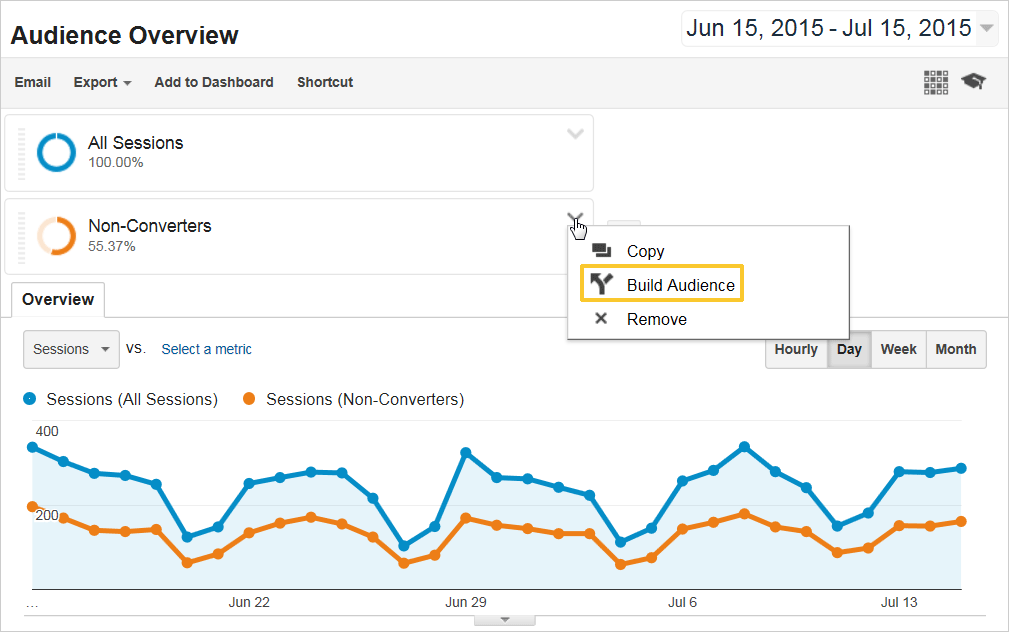Advanced Techniques for Remarketing In Google Analytics
Advanced Techniques for Remarketing In Google Analytics
Blog Article
Remarketing in Google Analytics: Changing Site Visitor Information Into Sales
The ability to exactly target audiences based on their actions and choices opens doors to a realm of opportunities, pushing services towards lasting development and success. Through a precise evaluation of site visitor actions and a customized remarketing method, businesses can navigate the digital landscape with precision and finesse, untangling the true potential of their on-line existence.

Advantages of Remarketing in Google Analytics
Remarketing in Google Analytics offers services the opportunity to reconnect with web site site visitors that have actually revealed passion in their services or products, thus increasing brand exposure and conversions. By leveraging this powerful tool, companies can stay top-of-mind with potential consumers that have actually already engaged with their site. One of the essential benefits of remarketing is the ability to target specific target markets based on their habits on the site, enabling customized messaging and customized ad campaign.
Additionally, remarketing in Google Analytics can assist services increase their conversion prices by re-engaging with visitors who may not have actually made an acquisition or completed a desired activity on the internet site throughout their first visit. This targeted strategy can cause higher conversion rates and ultimately drive more sales. In addition, remarketing can likewise help businesses construct brand name loyalty and trust by preserving regular interaction with potential clients throughout their purchasing trip.
Establishing up Remarketing Campaigns
When initiating remarketing projects in Google Analytics, organizations need to very carefully plan and apply calculated targeting techniques to effectively reach their wanted target market. The initial action in establishing remarketing projects is to define clear purposes. Whether the objective is to increase web site conversions, promote certain products, or increase brand understanding, having a well-defined goal will certainly lead the entire project strategy.
Next, organizations need to create target market lists based upon specific standards such as web site site visitors, users that deserted their purchasing carts, or those who interacted with specific web content. These lists enable targeted messaging customized per segment of the audience, boosting the opportunities of conversion.

Last but not least, businesses must establish up conversion tracking to measure the success of their remarketing projects properly. By assessing the performance data, organizations can enhance their projects for far better results and higher ROI.
Leveraging Audience Segmentation for Remarketing
Utilizing target market division is a crucial method for boosting the performance of remarketing projects in Google Analytics (What Is “Remarketing” In Google Analytics?). By splitting your website visitors into distinct groups based upon their behavior, demographics, or interests, you can customize your remarketing initiatives to target these particular sectors with pertinent advertisements. Target market segmentation permits you to develop more individualized and targeted campaigns, raising the possibilities of re-engaging visitors and driving conversions
Segmenting your target market allows you to provide customized messaging that resonates with each group's needs and preferences. As an example, you can produce separate remarketing lists for customers that abandoned their buying carts, visited details item pages, or downloaded a particular resource. By understanding the various inspirations and interests of these sections, you can craft engaging ad creatives that are a Go Here lot more likely to catch websites their attention and motivate them to revisit your website.
Additionally, audience division also aids you optimize your ad invest by focusing on high-value sectors that are much more most likely to convert - What Is “Remarketing” In Google Analytics?. By examining the performance of each segment, you can assign your budget plan much more successfully and take full advantage of the return on your remarketing investment
Analyzing Remarketing Efficiency Metrics
Metrics such as click-through rate (CTR), conversion price, expense per purchase (CERTIFIED PUBLIC ACCOUNTANT), and return on ad invest (ROAS) supply beneficial understandings right into the performance of your remarketing initiatives. Certified public accountant assists figure out the expense of obtaining a client via your remarketing project, while ROAS examines the profits produced for each dollar spent on advertising. By evaluating these metrics, you can recognize locations for enhancement, maximize your projects, and allot budget a lot more successfully to make best use of the ROI of your remarketing approaches in Google Analytics.

Ideal Practices for Remarketing Success
Building on the structure of analyzing remarketing efficiency metrics, executing finest practices is key to achieving success in your remarketing undertakings. One critical finest practice is to sector your target market successfully. By splitting your audience based upon their behavior, demographics, or rate of interests, you can produce tailored messaging that resonates with each sector, inevitably raising the chance of conversion. In addition, guarantee that your remarketing advertisements are aesthetically appealing and have engaging phone calls to action. Catching the user's attention and prompting them to take the wanted action is crucial.
Pestering users with the same ad consistently can lead to nuisance and lowered performance. Monitor your projects frequently, examine the data, and make data-driven choices to constantly improve your remarketing efforts for maximum impact.
Verdict
In conclusion, remarketing in Google Analytics provides companies the opportunity to utilize site visitor data to enhance sales and drive conversions. By utilizing target market segmentation, analyzing efficiency metrics, and applying finest practices, businesses can customize their remarketing efforts to target high-value segments successfully. Through engaging ad creatives and conversion tracking, organizations can develop brand name commitment and depend on, ultimately maximizing the this page influence of their advertising and marketing approaches.
With a meticulous evaluation of visitor actions and a customized remarketing method, organizations can browse the digital landscape with accuracy and skill, unraveling the real possibility of their online visibility.
One of the essential benefits of remarketing is the capability to target specific target markets based on their actions on the web site, permitting for personalized messaging and tailored advertising and marketing projects.
In addition, remarketing can additionally assist businesses develop brand name commitment and trust by maintaining constant interaction with prospective clients throughout their acquiring trip.
Metrics such as click-through rate (CTR), conversion price, expense per procurement (CPA), and return on ad spend (ROAS) provide beneficial insights into the efficiency of your remarketing initiatives. By assessing these metrics, you can recognize locations for improvement, optimize your campaigns, and designate spending plan extra effectively to maximize the ROI of your remarketing techniques in Google Analytics.
Report this page